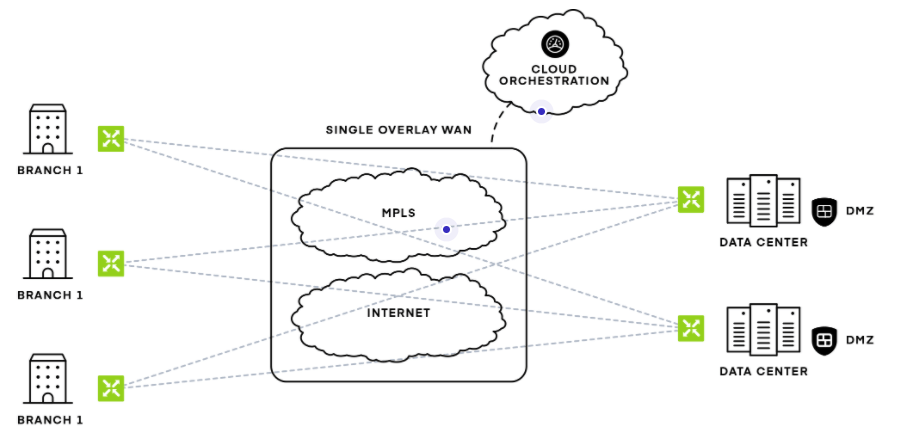The evolution of the business-centric network needs SD-WAN: Expereo CTO
Here at Tech HQ, we’ve often made the point that a digital transformation — something of a buzzphrase around every industry at the moment — requires a transformation of the structures and frameworks of the technology in the enterprise as an integral part of the process. (We’ve stressed, too, the importance of changing the business’s operations for its human employees; but that’s a different article.)
For IT departments, digital transformation means something quite different from how it might have been interpreted a dozen years ago. Back in the early noughties, a digital transformation would have been an upgrade to in-house server hardware, perhaps a new MPLS line or two to support branch offices, maybe even a failover ADSL line for every remote installation.
But the nature of business has changed, and now IT departments are all about empowering the business functions to flourish — that might be enabling better access to and responsiveness from a remote cloud service, giving better customer experiences, and making sure that data is moving where it needs to be, in the shortest time possible. With the large proportion of end-user interactions and employee activities taking place in networked environments, IT needs to think differently about how it structures its provision to best support this shifting paradigm.

Kristaps Petrovskis
We spoke recently to Kristaps Petrovskis, the CTO of connectivity gurus Expereo, about digital transformation, with specific reference to connectivity: prioritizing, determining need, and changing the overall topology that’s at the heart of the enterprise’s digital infrastructure. In planning SD-WAN (software-defined networking) policy, how do we judge requirements for each business function or individual application? Is it as easy as dropping in a new networking overlayer, and sitting back to wait for that long-overdue promotion & raise? Definitely not, Kristaps said:
“If you really want to reap the benefits of this type of deployment of SD-WAN and application-aware routing, you need to see how your enterprise environment is changing — which it does a lot — and see how people are consuming apps differently. You need to spend a little more time and effort on this ‘maintain’ phase. Then again, it balances out, given the gains you get.”
The software-defined WAN capabilities of Expereo’s platform don’t just give deployment tools to IT teams; they also enable the long-term network monitoring insights that can keep the network provision as agile as the business demands it to be. That, of course, creates visibility onto what’s happening on the network. Kristaps suggested that what becomes obvious might include shadow IT (in which case, why is shadow IT happening at all?), or even unexpectedly heavy access to YouTube (not frowned upon as time-wasting, but an integral element of the Marketing Department’s latest digital campaign, maybe?).
But for network teams, shadow IT can be mysterious as to what’s happening. “To you, it’s just web traffic. With the right visibility, and suddenly the network and IT [needs] are very much linked; you start gaining visibility on that.”
With the right SD-WAN platform, therefore, the network becomes an important part of business strategy. Knowing exactly how the organization needs and wants to consume data is vital in planning how IT needs to be provisioned. That’s quite a change from a few years ago when provisioning was just about over-provision and guesswork.
In traditional network set-ups, it was not uncommon for every piece of data from remote locations to be tunneled into a central point (often the head office or main data center) for security screening. Then, those packets of information would “go out” into the broader internet. Traffic destined for the remote installation would have to follow the reverse, right back again. To make that happen, networks had to be massively overprovisioned, with, say, a dedicated MPLS between every remote installation and the central point.
But by deploying a properly-managed SD-WAN, the right resources can be deployed to ensure safe connectivity for all users, customers, applications, and services — regardless of location.
The operational overheads of provisioning connection abstraction and security are negligible in comparison to the business “wins.” Plus, the Expereo Cloud Acceleration platform also intelligently routes traffic from A to B more efficiently than “native” routing. So, even if two points are connected by the shortest route, that may not be the best route: tthe Expereo platform shows you this.

Expereo
The realities speak for themselves. Without the proactive, new-generation of routing optimization from Expereo, “Your users are used to working at a certain speed because an application loads in a certain time. And suddenly, things go crazy, or packet loads go crazy and [it] suddenly loads in double the time. Affecting large amount of users, multiple times a day.” Petrovskis said.
On top of the other benefits (security, monitoring, scalability, and agility), the math speaks for itself when multiplied out to enterprise scale. Two seconds saved by 1,000 people, say a hundred times a day, totals 55 hours a day in wasted time. That’s the equivalent of employing six or seven extra people to do nothing!
To learn more about how the Expereo SD-WAN can change the way your organization saves money, communicates and operates, get in touch with a local representative.









